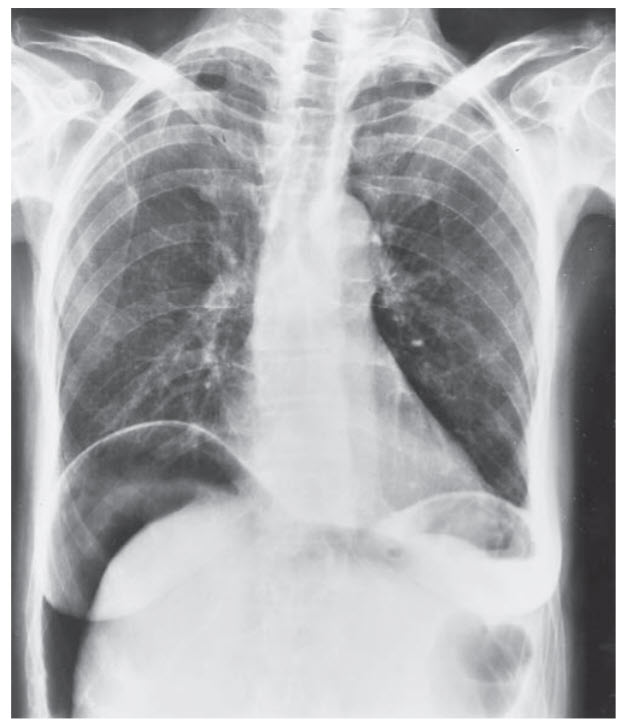Question 2#
A 62-year-old man with a history of GERD and peptic ulcer disease presents with severe upper abdominal pain. The patient reports that the pain abruptly started 6 hours ago while he was eating breakfast. He reports diffuse pain that radiates to his back. He has a blood pressure of 100/60 mmHg, pulse of 118/min, temperature of 37.9°C, and a respiratory rate of 24 breaths per minute. On physical examination, there is exquisite tenderness to superficial palpation over the entire abdomen. The patient is unable to tolerate the rest of the abdominal examination.
Which of the following is the best next step in management?
A. Ultrasound of the abdomenB. Lipase levels and liver function tests
C. CT scan of the abdomen
D. Chest x-ray
Correct Answer is D
Comment:
Chest x-ray. With this patient’s history of peptic ulcer disease and acute onset abdominal pain, bowel perforation should be suspected. This patient is likely suffering from a perforated peptic ulcer given his inability to tolerate an abdominal examination (guarding and other peritoneal signs may suggest gastrointestinal perforation). The best initial step in management is an upright chest x-ray to detect pneumoperitoneum (chest x-ray will show free air underneath the diaphragm, Figure below). Detecting pneumoperitoneum is diagnostic of perforation. (C) If a chest x-ray does not generate positive findings and perforation is highly suspected, proceed with abdominal CT scan. However, chest x-ray should be performed first since it can be done immediately; be cautious of sending patients that may deteriorate to the CT scanner! (A, B) Laboratory tests are too time consuming and would not help diagnose perforation; an ultrasound is not a sensitive test for detecting intestinal perforation.
